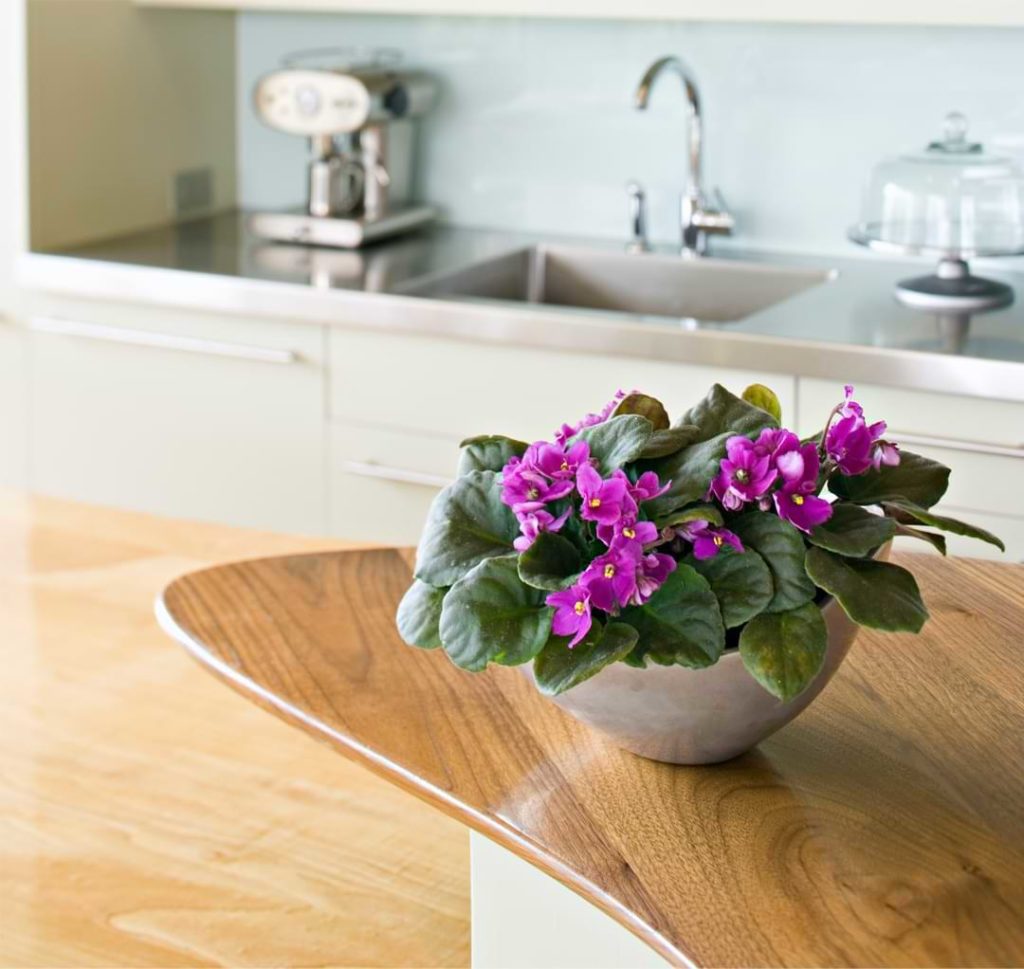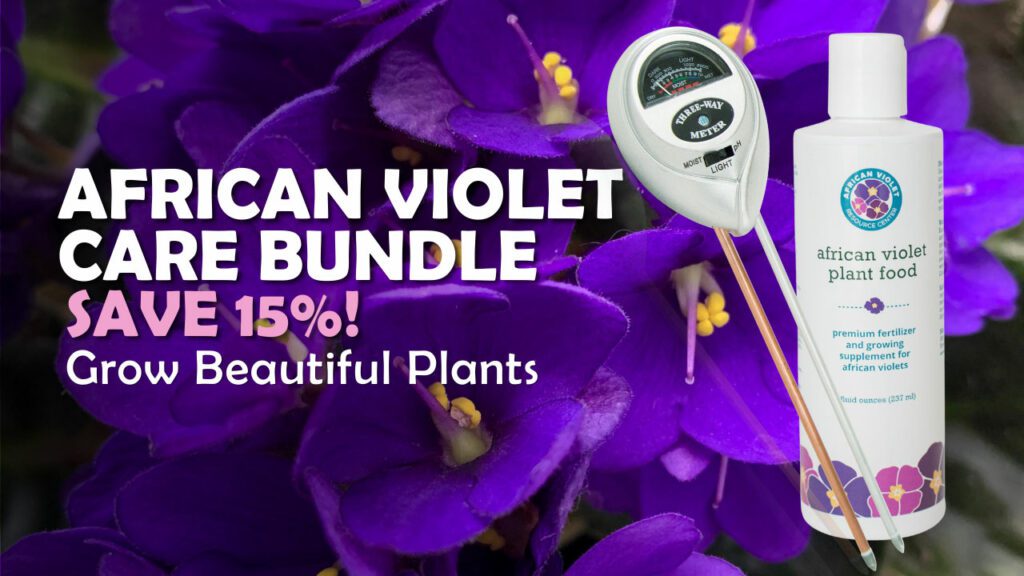It’s no secret: African violets have quite the reputation for being very particular about the care they receive. This can give beginners a little starter’s anxiety, but it doesn’t take much to master the most important aspects of care.
While many guides cover the basics of African violet care indoors, they often leave out easy rookie errors you’ll want to avoid. We pulled together a few easy tips to save you the headache and send you out the starting gates set up for success.
Rookie Move #1: Growing African Violets Outdoors
The question isn’t “Can African violets live indoors?” It’s “Can they live anywhere else?!” While new growers may be excited to add some vibrant pops of color to their outdoor gardens, unfortunately, that won’t fly with this delicate plant. That’s because African violets are extremely sensitive to sunlight, rain, and temperature extremes.
Avoid this newbie headache by: taking your African violet care indoors—exclusively.
Rookie Move #2: Too Much Fun in the Sun
Because they like it bright, you might be thinking, “Do African violets need direct sunlight?” The answer? Absolutely not.
African violets evolved in a lush jungle region of Tanzania. While they love the sun, they’re accustomed to receiving a bit of protection from the forest canopies. Too much direct sunlight will cause their delicate leaves to shrivel and burn.
Avoid this beginner’s headache by: placing your plant babies in bright, indirect sunlight. Set them back a bit from the windows in a well-lit room, and they’ll feel right at home. Our guide to African violets and sunlight digs in a little deeper.
Rookie Move #3: Cold-Water Shock
While you may find an ice-cold glass of water ultra refreshing, that’s not the case with your new houseplant. That’s because chilly water can shock African violets’ delicate root systems, wreaking havoc above and below ground. Your plant may cease to bloom, lose color in its leaves, or have trouble establishing its roots.
Avoid this beginner’s headache by: using room-temperature water every time you give your plant a drink. Check out our guide to watering your African violet for everything you need to know about bath time.
Rookie Move # 4: Too Much Company
This can be a little confusing to new growers. Do African violets like to be crowded? YES—but only in the pot. Restricting the space their roots can grow helps power year-long blooms, one of the rewarding parts of mastering African violet care indoors.
However, clustering individual potted plants together can make your entire collection vulnerable to pests and disease.That’s because close quarters make it easier for unwanted guests to hop from plant to plant, turning a minor headache into a major issue in no time.
Avoid this beginner’s headache by: arranging your collection so their leaves do not touch. If you suspect an individual plant has been compromised, immediately isolate it until it recovers. (No hard feelings, sick plant!)
Rookie Move #5: Lopsided Growth
Imagine lifting weights with only one arm. Over time, you’d have muscles that are uneven. Not a great look, right? The same goes for your plant and sunlight. Since African violets need to be kept back from the windowsill, new growers often forget to rotate their plant and give all its sides their moment in the sun. This can cause uneven growth, with denser foliage sprouting up on the side that faces the window. Eventually, this imbalance will cause your plant to snap and topple over.
Avoid this beginner’s headache by: rotating your plant ¼ every time you water as part of your routine for African violet care indoors.
Rookie Move #6: Ignoring the Neck
African violets grow from the crown out, which means that the oldest leaves are the ones closest to the soil. These leaves will generally fall off as they reach the end of their life cycle. With time, this can lead to a trunklike “neck” reaching up from the soil.
The rookie mistake here? Panicking and thinking your plant is dying and stressing it out with fertilizer or too much water. The reverse error? Ignoring the neck, which will eventually cause your plant to snap where it is bare and vulnerable.
Avoid this beginner’s headache by: removing your plant from the pot and trimming a portion of the root ball that is the same height as the neck. Next, place the plant back in the pot and cover the neck with fresh soil up to the bottom leaves.
Rookie Move #7: Taking it to the Extremes
More so than most houseplants, African violets like it pleasant. They don’t like too much sun, too much heat, or too much chilly weather. Consider your plant a Goldilocks flower; it likes it just right. This means that placing your African violet too close to a radiator or asking it to endure a chilly night on a three-season porch can be more detrimental than you think. In the short term, temperature extremes can cause shriveled leaves, dropped blooms, or wilty foliage. In the long term, they can stress your plant out so much that it dies.
Avoid this beginner’s headache by: providing your African violet a stable environment of 68-70°F. You will also want to keep it away from direct sunlight and any appliances with a coil that causes fluctuations in temperature.
What rookie moves have you made along the way? Tell us what you’ve learned about African violet care indoors in our Facebook group.
Join the African Violet Club!
Whether you’re just starting out or are a seasoned grower, African Violet Resource Center has everything you need to help your plant grow vibrant and strong. Explore our other articles, visit our online shop, and connect with other houseplant lovers in our Facebook group to learn everything you need to know about this rewarding hobby!
More Great African Violet Resources
The Best Houseplants for Your Environment
Everything You Need to Know About African Violet Leaves
6 Signs Your African Violet Is Dying and How to Revive It
Endless Summer: Here’s How to Grow an African Violet Garden That BLOOMS







